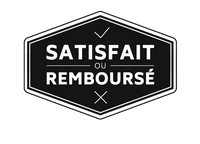Expressionnism is an emotionally charged art movement of the early 20th century. It challenged traditional artistic techniques by using intense colours, distorted and exaggerated forms and deeply subjective content. While there are many Expressionist artists, Franz Marc, Max Beckmann, Egon Schiele, August Macke and Marianne von Werefkin are among the most famous. Each artist was inspired by the desire to express their inner feelings and emotions, which led them to rigorously experiment with different brushstrokes, colour palettes and canvas shapes. Their works were revolutionary for their time and remain among the most inspiring works of art today.
They sought to represent universal emotions and states of mind through their work. Instead of focusing on the exact representation of reality, the expressionists used abstract and distorted forms to paint feelings. The characteristic features of this style are: sharp lines, dynamic brushstrokes, extreme exaggeration of perspective or form, flattened planes of modelled shapes with strong contrasting light sources, dark colour palettes and indistinct shapes that blend into the work. The expressionists' style of painting is characterised by its exploration of the emotions of the people depicted in each work. With its intense colours, distorted forms, exaggerated lines and unbalanced compositions, Expressionism attempts to evoke emotional responses in viewers rather than objective or tangible images. It has had a considerable impact on modern art worldwide, inspiring multiple genres throughout the period.
Some of the most famous expressionist artists:
Franz Marc
Franz Marc was a German artist associated with the German Expressionist movement, known for his vibrant and dynamic painting style. He believed that art should serve a higher spiritual purpose, often using bright, contrasting colours to depict an inner impulse for creativity. His work focused on abstract forms of animals and landscapes to create and evoke emotions through still images. This can be seen in his works Blue Horse I, The Tiger and White Cat. Marc said: "The eye must be trained to perceive the inner essence of a thing rather than its outer form. In this way, we can create fresh arrangements of line and colour that appeal to our emotions as artisans, regardless of the subject matter." This quote sums up his desire to offer viewers an immersive experience by challenging the perspectives surrounding visual subjects.
Buy a reproduction of Franz Marc
Max Beckmann
Max Beckmann made a major contribution to the Expressionist movement. His work differs from other Expressionists in its affinity with traditional oil painting techniques and figurative compositions, resulting in dramatic and emotional works that often depict deep psychological conflicts. He is perhaps best known for three of his works: The Departure, Woman with Mandolin in Yellow and Red, and Still Life with Black Plastic. The Departure captures a passionate farewell between two lovers through the use of texture and light-dark contrast. Woman with Mandolin in Yellow and Red depicts a woman looking directly at the viewer, desperately clutching her mandolin as if it were her last possession. Finally, Still Life with Black Plastic presents an abstract still life composed of random elements such as oysters, black plastic cups, tablecloth patterns and clothing, creating a sense of confusion while making the viewer question his or her own mortality. Max Beckmann's role in Expressionism has had a great influence on the development of modern art - each of his remarkable paintings has something unique to offer today's viewers.
Buy a reproduction of Max Beckmann
Egon Schiele
Egon Schiele was a major figure in the Expressionist art movement. His works and stylistic innovations demonstrate a deep commitment to this new, emotionally driven approach to painting. His most famous works, such as The Embrace, Sunflower 1908 and Self-Portrait with Hands Clasped on Chest, are marked by their distorted forms, dark moods and vibrant colours. He flattened the planes of space while exaggerating the angles, resulting in an almost geometric approach to the representation of human bodies and emotions. Through these techniques, he sought to capture the essence of inner despair and longing that was associated with this developing style. Through his work, Schiele helped define twentieth-century abstractionist art, which strove to move away from realism to explore the depths of human emotion.
Buy a reproduction of Egon Schiele
August Macke
August Macke was an artist strongly associated with the German Expressionist movement. His paintings had a distinct and vibrant aesthetic, akin to Fauvism, and featured a vivid colour palette in cool, muted tones. This style is well demonstrated in his works Courtyard of the Saint-Germain Country House, In Front of the Hat Shop and Terrace of the Saint-Germain Country House. These three paintings embody Macke's expressionist sensibility; he moves away from realistic depictions and instead uses exaggerated colours to evoke emotions in his viewers. Perception is key here; Macke wants us to focus on the experience of viewing his artworks rather than the scene itself or its details - the dominant colours emphasise this idea and offer a kind of dreamlike escape for viewers trying to grasp the deeper meanings of individual artworks or Renaissance pieces.
Buy a reproduction of August Macke
Marianne von Werefkin
Marianne von Werefkin was one of the first Expressionists and made a major contribution to this movement in Germany. Her personal style of painting is evident in her works, including Im Dorf, which translates as 'In the Village' in German. This oil painting, done between 1909 and 1910, has an abstract mixture of colours and brushstrokes that all intermingle together, making it difficult to distinguish individual objects. It conveys intense emotion while remaining open to interpretation, a classic use of symbolism in his art. Fantastic Night is another example. Completed in 1910, this work still contains elements of symbolism, but also makes extensive use of texture to describe the forest environment, which she painted with bright blues and greens. Finally, Sunrise, which is permanently in the collection of the State A Pushkin Museum of Fine Arts, depicts a sacred moment using soft, warm yellows and purples contrasted by darker colours on the sides, giving a sense of divine power. Von Werefkin's works captured the emotional intensity that prevailed at the time of Expressionism, showing how powerful his influence was on the whole movement.


















